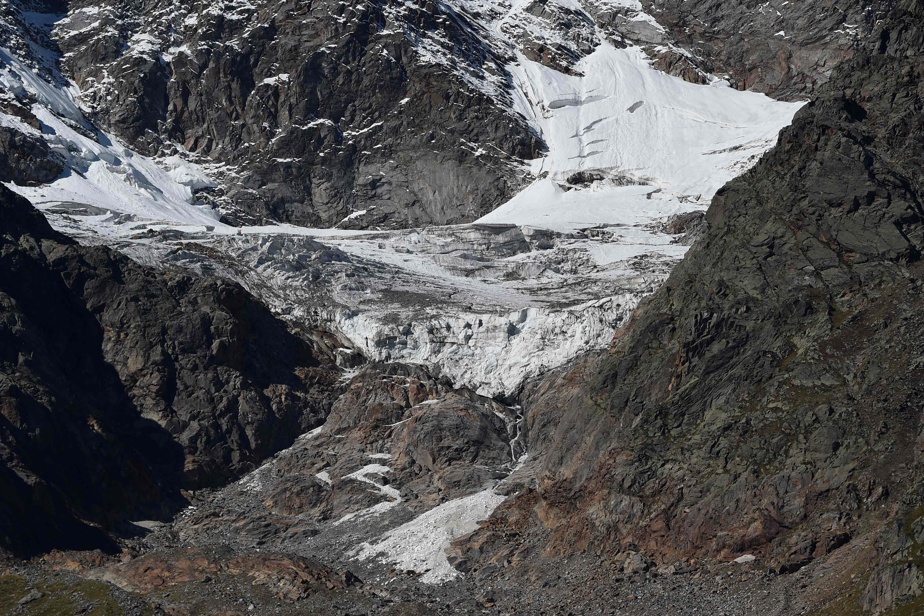Nothing will be able to prevent the melting of the glaciers and consequently a rise in the level of the oceans. This is the harsh observation made by the World Meteorological Organization in its most recent report released on Friday.
“Glacial melting and sea level rise – which again reached record highs in 2022 – will continue for thousands of years,” argues the World Meteorological Organization (WMO) in its latest report. entitled The State of the World’s Climate in 2022. Since 1970, the cumulative thickness loss of reference glaciers amounts to almost 30 meters. In Antarctica, the ice surface shrank to 1.9 million square kilometers in February 2022, the lowest on record. This is 1 million square kilometers less than the annual average recorded between 1991 and 2020.
In the northern hemisphere, the ice surface of Greenland has retreated for the 26th year in a row, recalls the WMO. Summit Station, located on the highest peak on the island, recorded the warmest September in its history in 2022. Two more firsts were added for this month of the year: the ice began to melt and rain fell. The melting of the ice may accelerate the effects of global warming, since it helps to reflect the sun’s rays. The water, on the contrary, absorbs them, which raises the temperature of the oceans. “The situation is particularly worrying in the Arctic since the sun’s rays are reflected there almost 100% by the ice,” said Alain Bourque, director general of the Quebec consortium Ouranos.
The WMO also reports that the forty glaciers monitored by the World Glacier Monitoring Service have seen their mass decrease almost every year since 1950. It is particularly in the European Alps that we can find the most visible signs of this phenomenon. . The WMO notes that Europe broke records for melting glaciers in 2022. Low winter snowfall, the arrival of Saharan dust in March and heat waves between May and September are the main causes. Swiss glaciers lost 6% of their ice volume between 2021 and 2022, and a third between 2001 and 2022.
Commenting on the World Meteorological Organization report, Alain Bourque notes that the past eight years have been the hottest on record, “despite the La Niña phenomenon” of the past three or four years. La Niña, remember, contributes to cooling temperatures, unlike its cousin, El Niño, which causes warming. According to Bourque, the temperatures observed in recent years would have been even higher without the La Niña effect. “What is very worrying is that now that La Niña is over, El Niño is in sight. If that happens, we will break the record for the year 2016 [hottest year]. According to scientists, there is a 66% chance that we will end the year 2023 with the arrival of El Niño”, he specifies.
“We have already emitted so much carbon dioxide into the atmosphere that it will take several decades to reverse this negative trend,” said WMO Secretary-General Petteri Taalas. The game is already lost for melting glaciers and rising sea levels, so that’s bad news. »
Last Thursday, the Mauna Loa station in Hawaii recorded a CO2 concentration of 423.25 parts per million (ppm) in the atmosphere, compared to 420.66 ppm a year earlier. According to the Intergovernmental Panel on Climate Change (IPCC), the limit not to be exceeded to limit global warming to 1.5°C is 350 ppm.
According to Alain Bourque, the melting of glaciers is likely to cause a positive feedback loop that will accentuate the effects of climate change. Scientists have repeatedly issued warnings about these tipping points, the full effects of which are not yet known. “We won’t be able to reconstruct that, 1 million square kilometers of ice that disappeared. The level of the oceans which is rising, we will not be able to bring it down, ”illustrates the Quebec scientist. His other concern is that ecosystems may find it increasingly difficult to absorb the effects of climate change. British Columbia, which recently faced drought, wildfires and flooding, is a good example, he said. “It wasn’t just bad luck. The effects were worse because the ecosystems had suffered the repeated consequences of climate change in the previous 20 years. »

